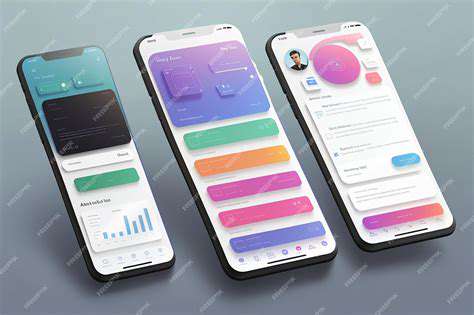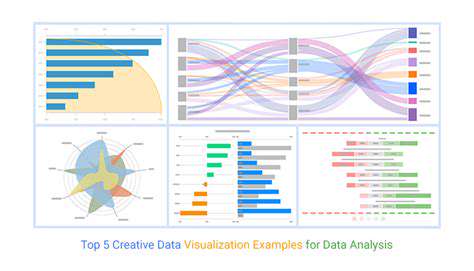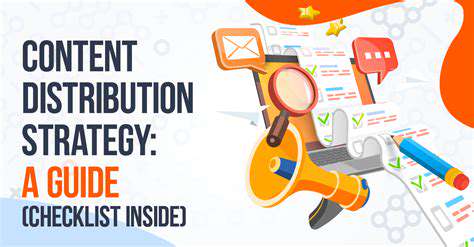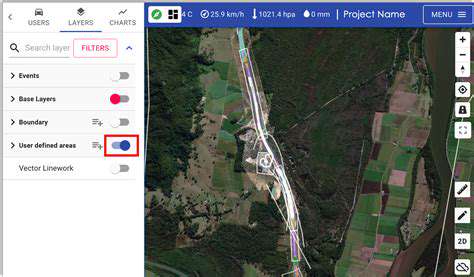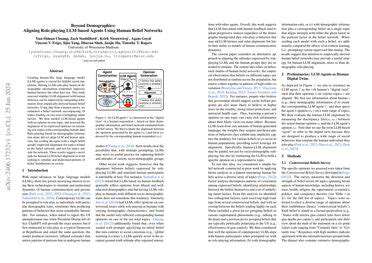Dynamic Push Notifications Based on Location
What makes these notifications truly powerful is their ability to create context-aware moments. A restaurant can detect when a loyal customer is nearby and instantly offer last-minute seating availability. Retailers can craft exclusive, location-triggered offers that feel personalized rather than promotional. This strategic approach builds deeper brand connections while respecting user attention - delivering value precisely when and where it matters most.
Optimizing Marketing Strategies Through Geofencing
At the heart of effective location marketing lies geofencing technology - virtual boundaries that trigger actions when crossed. This isn't just about sending notifications; it's about creating intelligent, location-aware customer journeys. Consider how a neighborhood café might deploy a 500-foot geofence to welcome morning commuters with a skip the line mobile order option as they approach.
The real magic happens when businesses layer time and behavior data with location intelligence. A bookstore could activate special weekend storytime alerts only when families enter their geofence on Saturday mornings. This precision targeting eliminates marketing waste while dramatically improving conversion rates. Beyond commerce, these systems prove invaluable for public safety - imagine receiving automatic emergency alerts when severe weather approaches your current location.
What many marketers overlook is the dual-purpose nature of location data. While driving immediate conversions, these interactions also generate valuable insights about customer movement patterns. Savvy businesses use this intelligence to optimize everything from store layouts to staffing schedules, creating a virtuous cycle of improvement.

Implementing Geo-Fencing for Triggered Notifications
Understanding Geo-Fencing
Geo-fencing represents a paradigm shift in customer engagement, moving from scheduled broadcasts to real-time, location-triggered interactions. The technology creates invisible engagement zones that activate when customers physically enter defined areas, blending digital and physical experiences seamlessly. It's like having a digital concierge that knows exactly when and how to assist each visitor.
Modern implementations combine multiple positioning technologies - GPS for outdoor accuracy, Bluetooth beacons for indoor precision, and Wi-Fi triangulation as a fallback. This multi-layered approach ensures reliable detection whether users are driving past a car dealership or browsing a museum exhibit. The key differentiator? These systems don't just know where users are - they understand when users cross meaningful thresholds that indicate purchase intent.
Implementing Geo-Fencing in Applications
Successful geo-fencing implementation requires careful architectural planning. Developers must balance accuracy with battery efficiency, often using adaptive location sampling that increases precision near geofence boundaries. The best implementations give users transparent control, allowing them to customize which location-triggered notifications they receive and when.
Privacy considerations are paramount. Modern frameworks require explicit opt-in and provide granular permission controls. Forward-thinking apps explain the value exchange clearly: Allow location access to receive personalized offers when you're near our stores. This transparency builds trust while increasing opt-in rates. Technical implementation should include:- Dynamic geofence sizing based on location density- Smart notification throttling to prevent overload- Context-aware delivery timing
Triggering Notifications Based on User Actions
The most sophisticated systems move beyond simple entry/exit triggers. Advanced implementations analyze approach vectors, dwell times, and visit frequency to deliver increasingly relevant messaging. A department store might send general promotions to first-time visitors while offering personalized recommendations to loyal customers based on past purchases.
Consider these innovative triggering scenarios:- Progressive discounts that increase as users move closer to checkout- Parking reminders triggered when users leave designated retail areas- Safety notifications activated when users enter high-crime zones after dark
Considerations for Geo-Fencing Implementation
Battery optimization remains the Achilles' heel of location services. Best practices include using significant location change APIs and motion detection to minimize active polling. On Android, the Fused Location Provider intelligently switches between GPS, Wi-Fi, and cellular positioning to conserve power.
Accuracy challenges require creative solutions. Urban canyon effects can be mitigated by combining GPS with Bluetooth beacon data. For large venues, indoor positioning systems provide meter-level accuracy. Always include manual refresh options and clear accuracy indicators so users understand location reliability.
